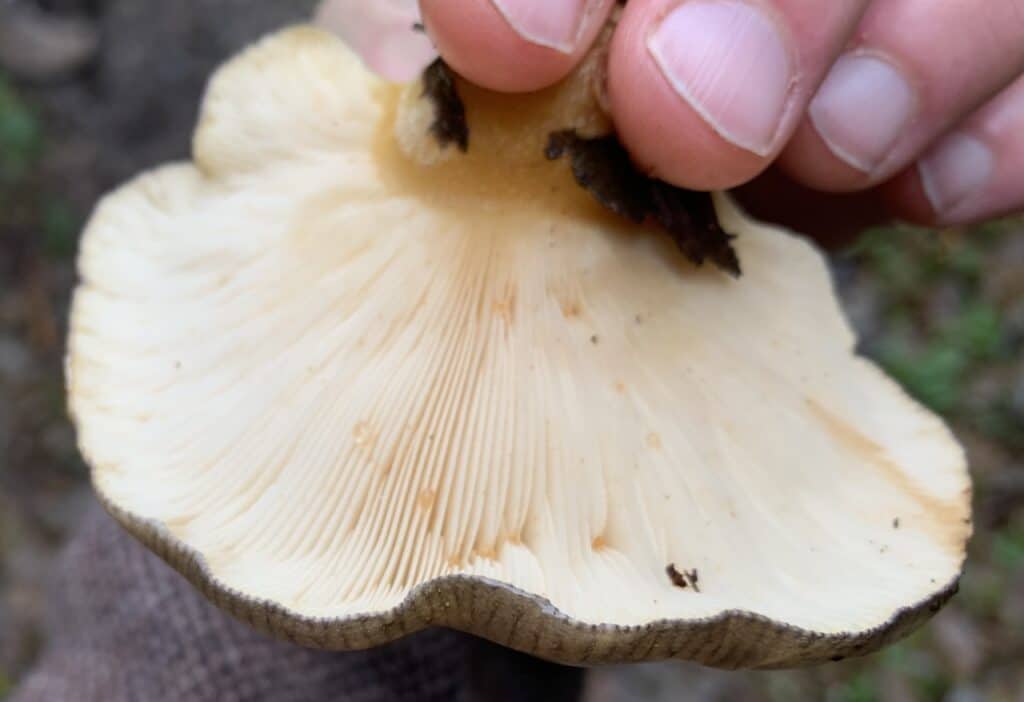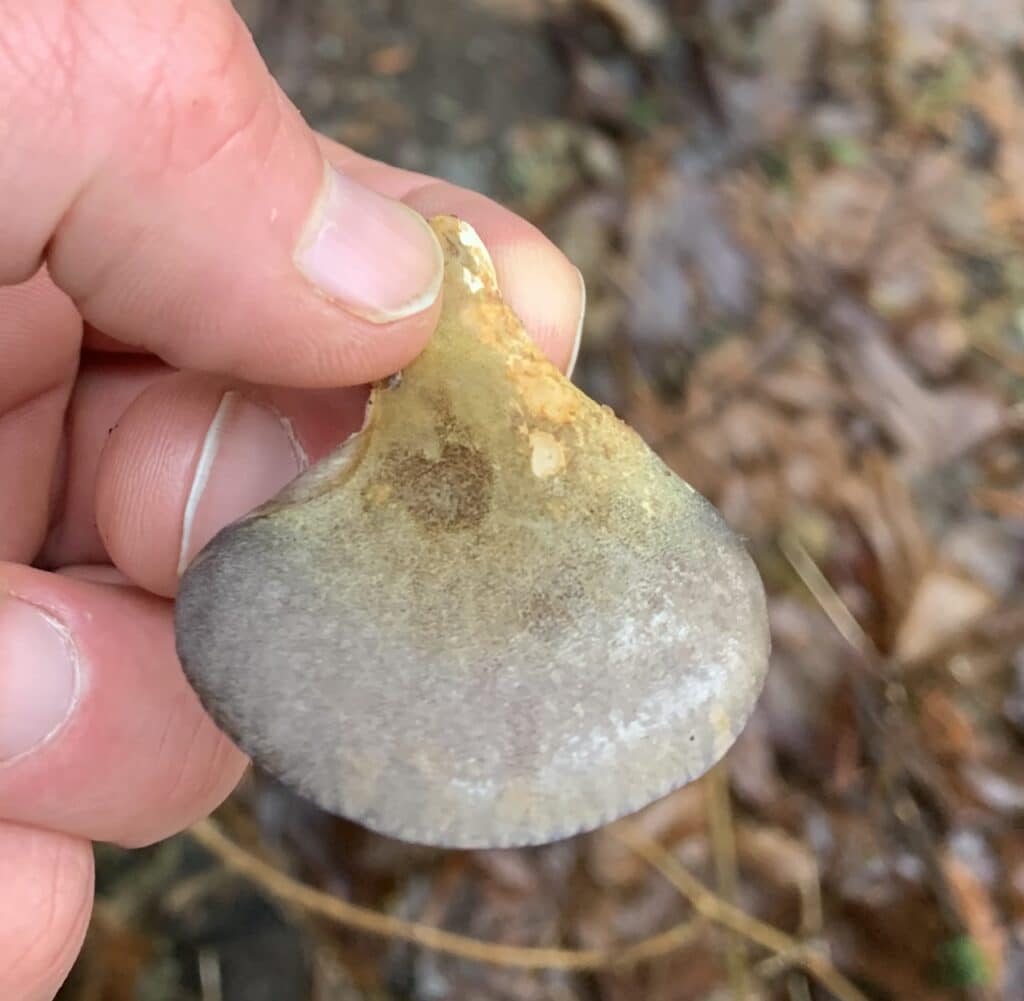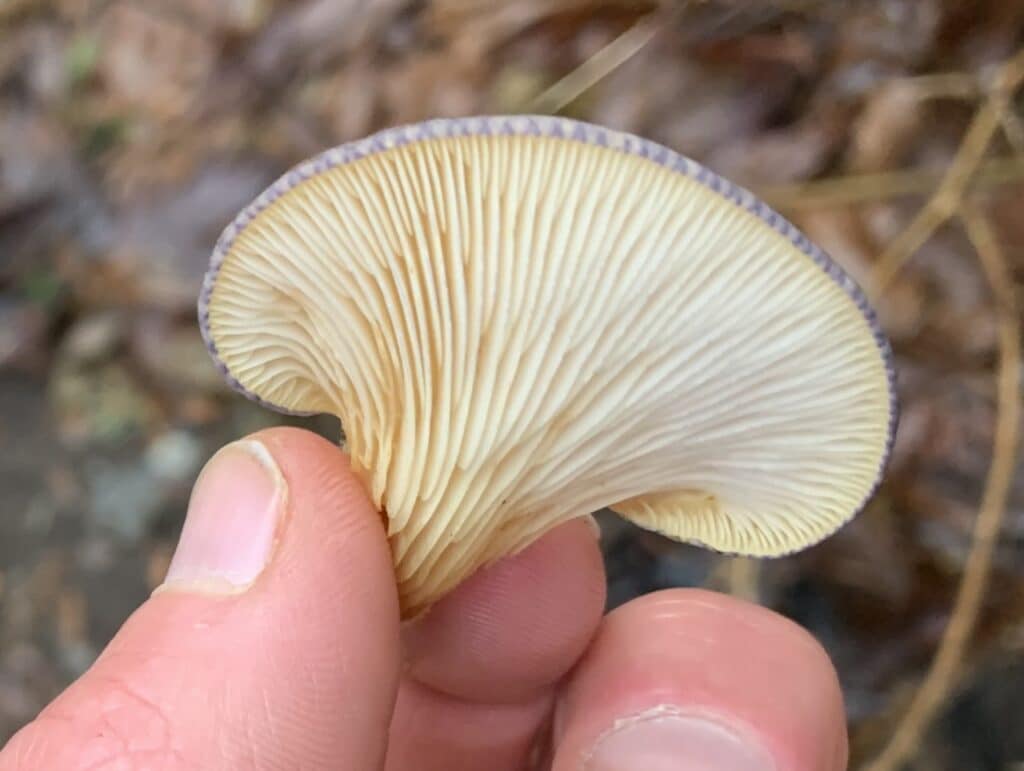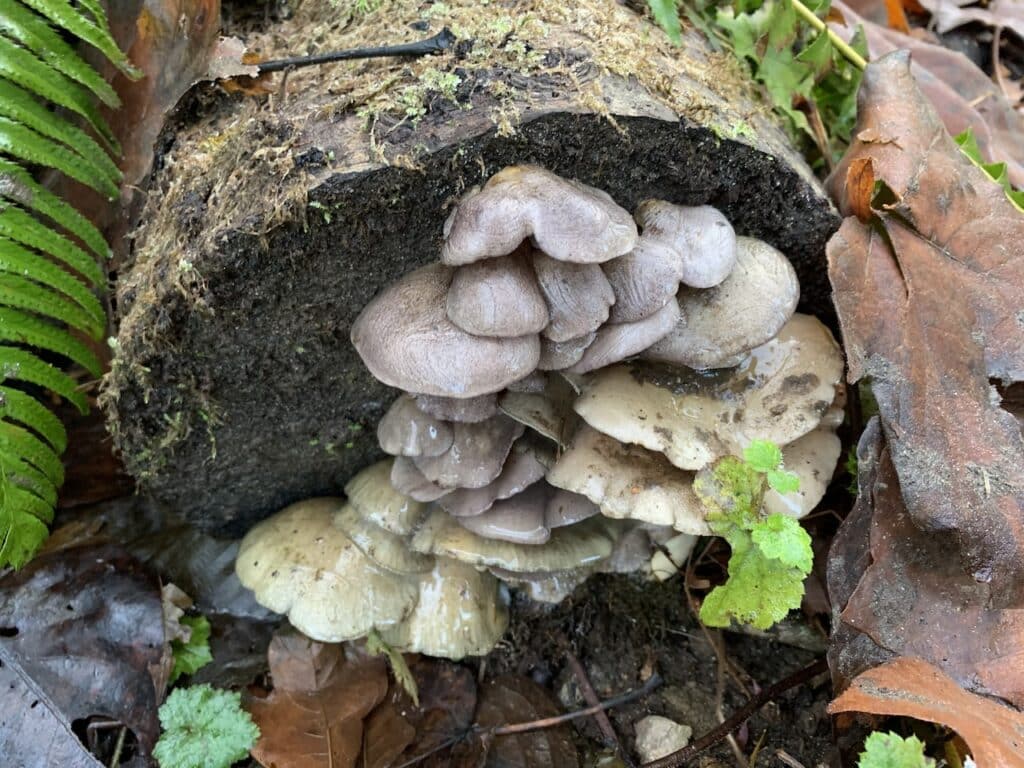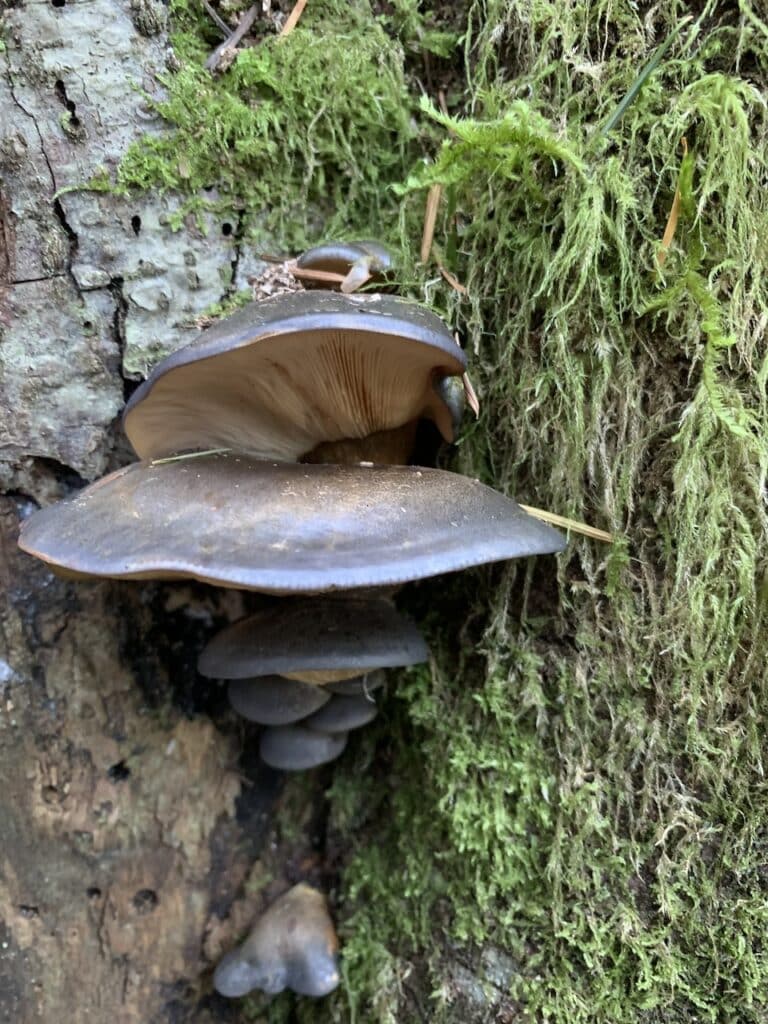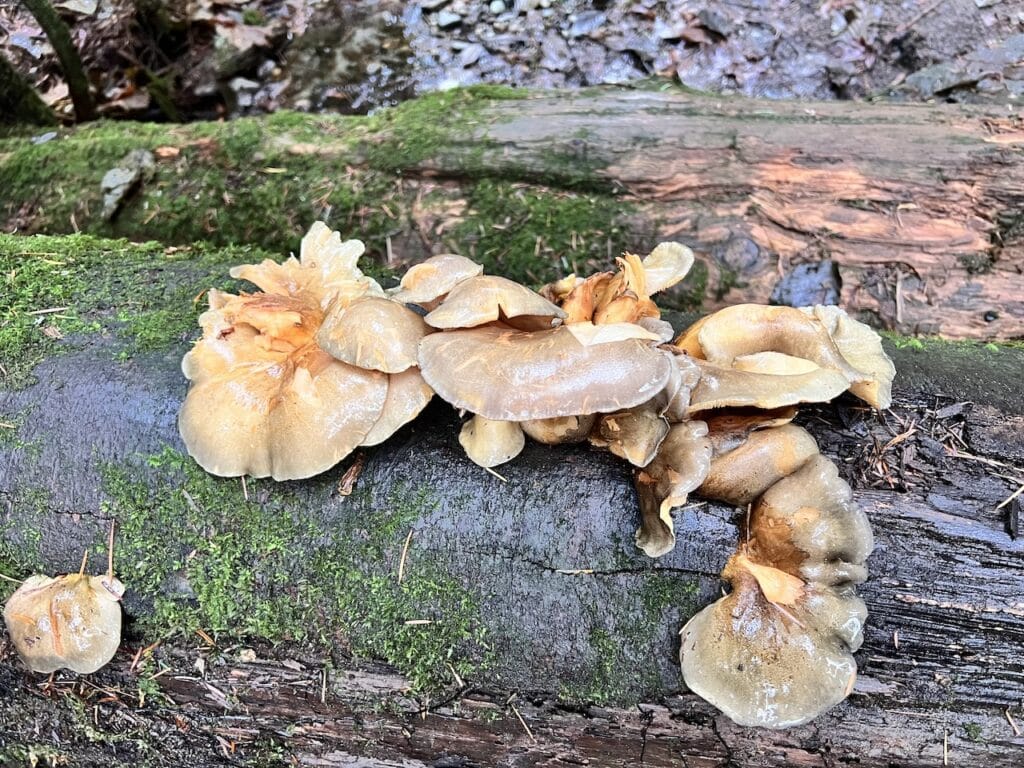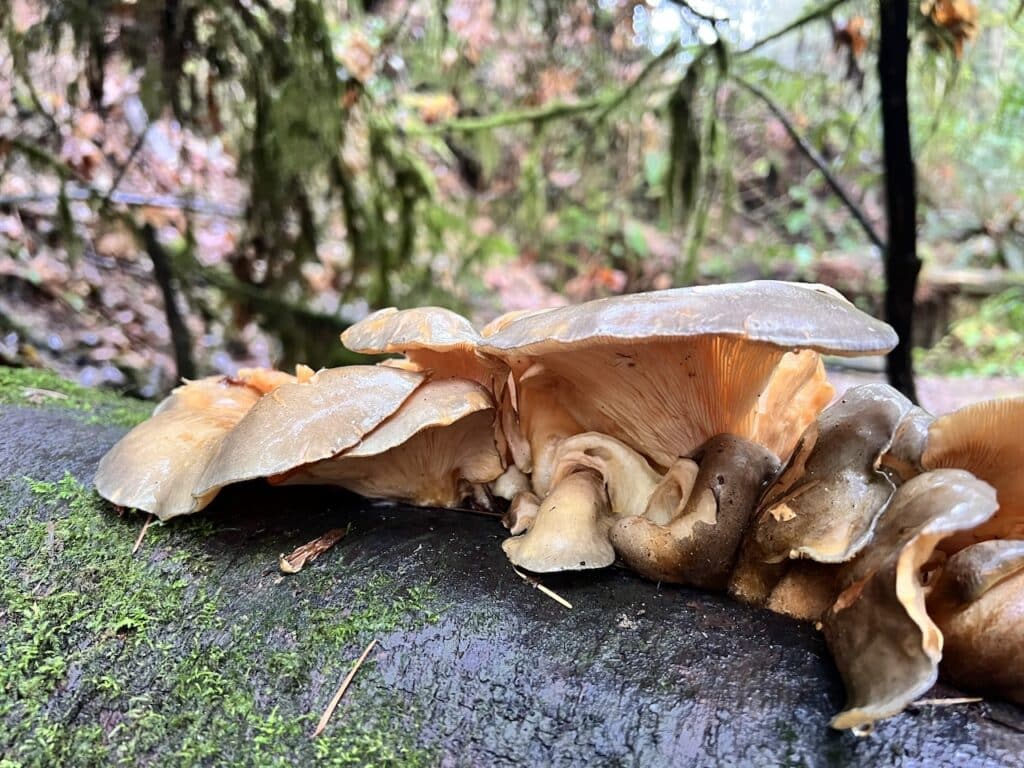The mushroom Sarcomyxa serotina (formerly known as Panellus serotinus), commonly referred to as the Late Oyster or Olive Oysterling, goes by different names around the world:
1. Japanese: In Japan, this mushroom is known as “Mukitake” (ムキタケ).
• The name “Mukitake” refers to its smooth, peelable cap skin, as “muki” (むき) means “to peel” in Japanese, and “take” (タケ) means mushroom.
2. Chinese: In China, it is often referred to as “Mu’er” (木耳) or a related term for wood-loving fungi, though this can also refer to other wood-growing mushrooms. More specifically, it may be locally called “晚生菌” (Wǎnshēng jūn), which translates to “late-growing fungus.”
3. European Names:
• German: Spätherbst-Lorchel or Spätherbstpilz (translates to “late autumn fungus”).
• French: Panellus d’automne tardif (meaning “late autumn Panellus”).
• Russian: Поздний устричный гриб (Pozdniy ustrichnyy grib), meaning “late oyster mushroom.”
4. Other English Names:
• Late Fall Oyster
• Olive Oysterling
• Late Oyster Fungus
These names emphasize its seasonal growth (late autumn/early winter), olive-brown cap color, and oyster-like shape. The variety of names highlights its appearance and ecology as a wood-decomposing mushroom often found on hardwoods in cooler seasons.
They are considered edible but differ significantly from true oysters mushrooms in the Pleurotus genus in both taste and texture.
